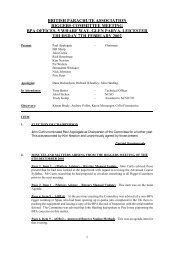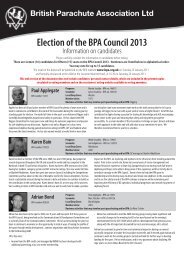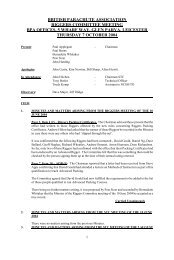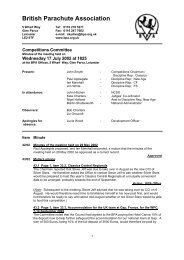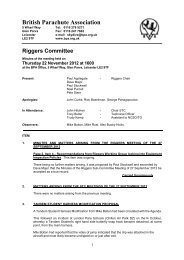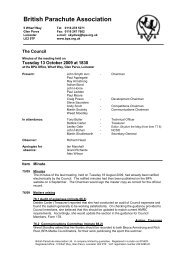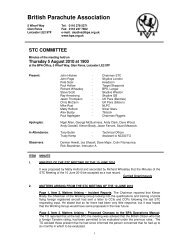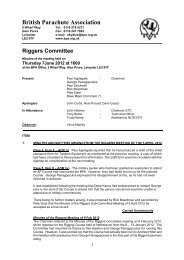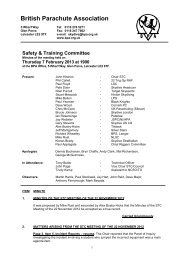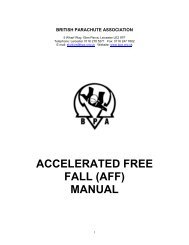Formation Skydiving Progression Manual - British Parachute ...
Formation Skydiving Progression Manual - British Parachute ...
Formation Skydiving Progression Manual - British Parachute ...
Create successful ePaper yourself
Turn your PDF publications into a flip-book with our unique Google optimized e-Paper software.
Appendix E: FS Skills Theory -Tracking<br />
With the ever-increasing performance of canopies the need for horizontal separation on<br />
deployment must also be ever increasing. To increase horizontal separation before deployment,<br />
we need to improve our ability to track.<br />
You have already demonstrated the ability to track; if you hadn’t you would still have student<br />
status. However, this is one of the skills we are unable to practise in the wind tunnel and often by<br />
this stage, you have only spent about the last five seconds of every skydive performing it. All<br />
skydiving skills require time to practise and time to get the feel for a new skill but so far tracking is<br />
the last thing we do. When the formation skydiving part has stopped, remember the tracking is<br />
still a vital part of the skydive.<br />
Tracking is a life saving skill and should be taken seriously as a result. It is the move we learn<br />
here for you to know how to achieve distance from others in your formation before deploying your<br />
parachute. The longer (in time) that you are able to maintain the tracking position before reaching<br />
your deployment altitude, the further you will be from other members of your formation. To<br />
achieve this, we need to gain as much lift as possible. When tracking the angle of attack and the<br />
shape of your body are the two factors that influence the amount of lift we aim to achieve.<br />
Lift increases as the angle of attack increases right up until the stall point. The angle of attack is<br />
the angle that the object meets the relative air. Relative air is relative to the direction you are<br />
travelling in.<br />
The higher than angle of attack, the higher the amount of lift, and the lower the<br />
angle of attack, the less lift. The following figures show the two extremes and it<br />
should be obvious that the better position for gaining distance from a formation is<br />
shown in figure E.14.<br />
Fig. E.13 Low Angle of Attack<br />
Fig. E.14 High Angle of Attack<br />
22



